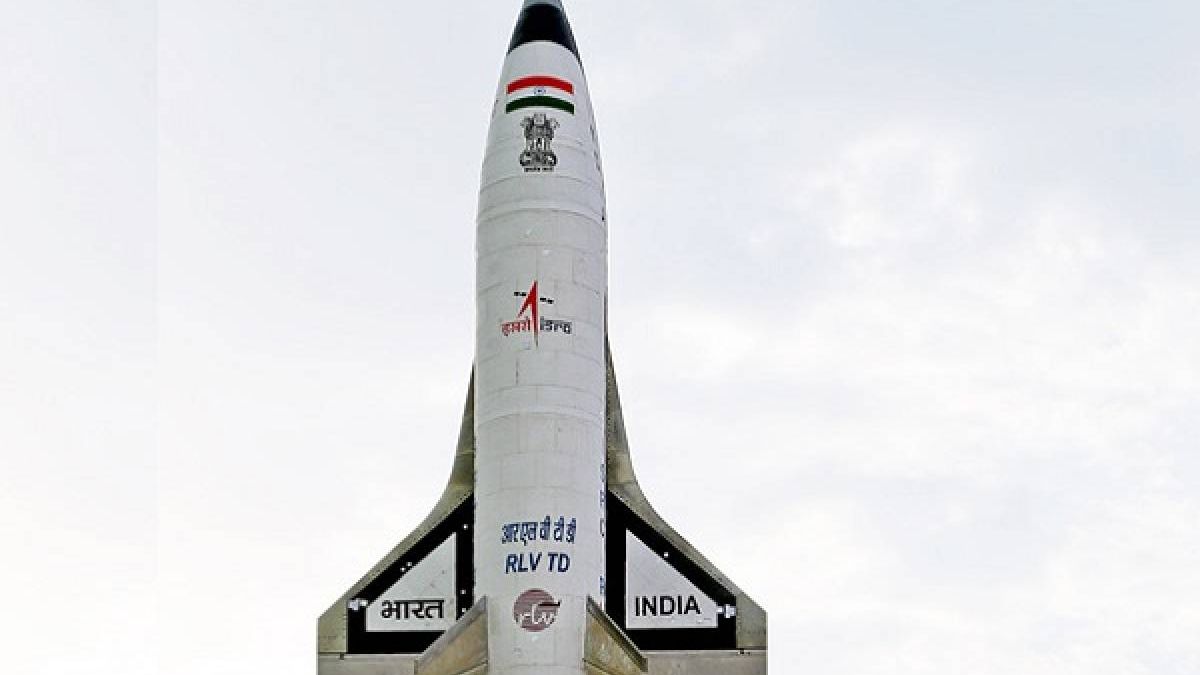
Reusable Space Launch Vehicle
The Concept of Reusable Launch vehicle (RLV) in space application is nothing new. NASA had realised it long ago and thence came the Space Shuttle. Of late, SpaceX has mastered this art. Chinese have been working on these technologies for varied reasons. Recently on 04 Sep 2020 they sent a reusable unmanned vehicle having robotic arm from their remotely located Jiuquan base to either deploy and/or trap & retrieve a satellite. On one hand where this technology can help salvage a satellite or highly critical asset in the orbit, it is also apprehended to be a hostile act as they may trap, disable or steal anyone else’s orbiting satellite too. Their RLV were also fraught with having applications of arming the space with deadly nuclear missiles. They mentioned that their RLV returned to earth on 06 Sep. It is speculated that the Chinese RLV is believed to be copied from NASA’s X-37B RLV design.
An unmanned or manned RLV is a heavy platform. The weight of such vehicles depends upon its expected role that determines the size and the equipment within. The heat shields, deceleration tools, flight control systems and landing gears…all add up. RLVs could be expected to weigh anything from few tonnes (RLV-TD of ISRO) to 2000 tonnes (NASA Space Shuttle). Lifting of such heavy payloads cannot be for the purposes of satellite deployments. A single rocket may be good enough to deploy number of satellites in different orbits in a single launch, something already demonstrated by ISRO. Using RLV for such purpose will be highly uneconomical. ISRO presently lacks such propulsion rockets to launch payloads in excess of 4 tonnes or so to the LEO. Hence, the RLV project is being worked out on two stage launch vehicles. NASA, Russia and China have developed the launch veh that can carry payloads in excess of 12 tonnes or so. Hence, development of launch veh of higher capacity is a priority area for ISRO and we have no doubt they must be working on it.
ISRO is one of the best professional institutions in world arena. However, we have seen them working with apparently short-sightedness on Human Space Program (HSP or Proj ‘Gaganyan’) as elaborated earlier (“The Counterviews” Issue 2:02). The Gaganyaan Project is expected to succeed with the Russian & French Technologies but our scientists were denied working on the newer & futuristic space technologies within India. A similar approach seems being adopted in the RLVs too. RLV program has huge potential leading to becoming a future Indian Space Shuttle (manned or otherwise), a temporary Space Station and so on. It can also be used as a countermeasure to any of the Chinese nefarious designs in the space-orbits.
The ISRO scientists seem to be working on the RLV project in split experimental modes of various stages of the space-flight sequences of launch, orbiting, re-entry and landing. One experimental launch (HEX) has been attempted in 2016 and the Landing Experiment (LEX) is due in the coming weeks. However, there are many questions on these experimental test modules as to how much of realistic it will be as mentioned in the following paragraphs.
Hypersonic Flight Experiment (HEX): This experimental flight was conducted on 23 May 2016 on an RLV prototype (?) with the following objectives: -
- Hypersonic aero-thermodynamic characterisation of wing body
- Evaluation of autonomous Navigation, Guidance and Control sys
- Integrated flight management
The RLV main body measuring 6.5m x 1m, weighing 1.75 ton was the test prototype. One may wonder what an RLV of such small dimensions could be capable of performance in the space. It is almost unthinkable if 1 meter of RLV diameter can house control systems, landing gears and the payload satellites mounted on it. Thermal Protection Evaluation was done by flying it to ~65 km altitude with 4.8 Mach speed and splashing in Bay of Bengal reportedly in the vicinity of the designated areas. Could this 4.8 Mach simulate the Thermal stress of re-entry at ~25 Mach that any orbiting spacecraft has? Probably not. However, if the surface material of the RLV is qualified to withstand the temperatures of re-entry (usually ~2000-3000 deg C), actual thermal testing of the RLV may not be required. One may have to calculate the aerodynamic friction energy. So, if the speed of the craft did not achieve ‘hypersonic (>5 Mach) and the surface temp did not reach those of re-entry plasm, why was the trial conducted and precious money wasted?However, the class of ISRO must be having some plan for such costly flight trial. Such small vehicle may only have pylons & fixtures on its exterior on which multiple payloads can be mounted to be released while in the desired orbits and separations.
Landing Experiment (LEX) has been scheduled for Oct/Nov 2020 at Chitradurg in Karnataka. It is planned to carry the RLV to 4 km in a helicopter. After release it will be gliding for a smooth landing on a strip. This too seems to be an experiment in isolation without considering the actual/expected speed of the returning RLVs from the orbit. However, being a low-cost trial, one can only hope that the experimental vehicle is not damaged BER. However, how far the experimental model will meet the trial objectives, is anyone’s guess. Similar apprehensions are there for the future REX (Return Flight Experiment) and SPEX (Scramjet Propulsion Experiment) trials too. Unless the aim and objectives of these trial fulfil the criteria of the actual or anticipated parameters, it will may not serve the purpose.
Surely ISRO will not be entering the space race of US and China. Both have huge surplus of funds (of trillions of dollars) and resources at their disposals that we cannot even think of. However, R&D on the cutting-edge space technologies must go on. Looking at the track record of ISRO, it can be expected that the meagre funds that Indian govt makes available to them at the cost of some or other social development of our nation, will be used judiciously. Wishing a successful venture to their RLV program.

